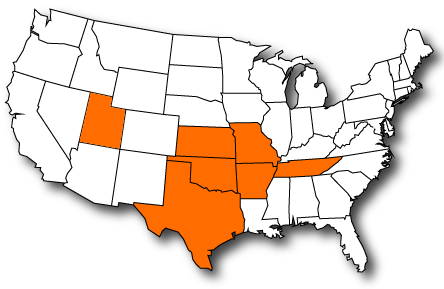Buying a home in Arkansas? Or maybe you’re just updating your current policy after a new roof, a kitchen upgrade—or let’s be honest, finally installing that storm shelter? Either way, homeowners insurance is a must-have for peace of mind. But let’s talk about what’s really on everyone’s mind: how much will this cost me?
Understanding the average cost of home insurance in Arkansas isn’t just a budgeting tool—it’s your secret weapon to avoid overpaying and ensure you’re properly protected. Rates can vary wildly depending on where you live (hello, tornado alley), the age of your home, and even your credit score. If you’re new to all this, the Complete Guide to Buying Home Insurance is a great place to start before diving into the numbers.
Whether you’re moving across the Natural State or just reviewing your current coverage, knowing what impacts homeowners insurance costs in Arkansas is key to getting the best bang for your buck.
Let’s break it all down, shall we?
Average Cost of Homeowners Insurance in Arkansas
If you’re wondering about the average cost of home insurance in Arkansas, you’re not alone. Homeowners insurance is a vital part of protecting your investment, but costs can vary significantly depending on where you live. In Arkansas, the average annual premium for homeowners insurance is around $3,200. This is noticeably higher than the national average, which sits at about $2,100 per year, according to data from the National Association of Insurance Commissioners (NAIC).
So, how does Arkansas stack up compared to the rest of the country? Well, Arkansas ranks among the states with some of the highest homeowners insurance premiums in the U.S. This is largely due to the state’s exposure to natural disasters like tornadoes, hailstorms, and flooding. These risks increase the likelihood of damage to homes, which insurance companies factor into their pricing.
Because of these factors, Arkansas homeowners often pay about 50% more than the average American when it comes to insurance premiums. That means understanding what drives your insurance cost is especially important if you’re moving to Arkansas or shopping for a new policy.
At G&G Independent Insurance, we help you navigate these costs to find affordable home insurance options that fit your budget, without sacrificing the coverage you need. Knowing the average cost of homeowners insurance in Arkansas can set the stage for making smarter, more informed decisions about protecting your home.
Key Factors Influencing Homeowners Insurance Cost in Arkansas
Understanding the homeowners insurance cost in Arkansas means diving into what drives those premiums up or down. Several key factors come into play, shaping how much you’ll pay for your policy.
Home Value and Size: Naturally, larger or more expensive homes cost more to insure. A bigger home means more materials and labor to repair or replace, so insurance companies factor that into your premium. If your home has high-end features or costly finishes, expect your insurance costs to reflect that.
Risk Factors Unique to Arkansas: One major reason premiums are higher here is due to natural disaster risks. Arkansas lies in Tornado Alley and frequently faces hailstorms, severe winds, and flooding—events that lead to costly claims. Insurance companies see these risks and adjust premiums accordingly. Living in an area prone to such disasters can bump up your insurance costs significantly. For more information on past disasters and recovery resources in the state, check out the Arkansas Division of Emergency Management’s Disaster Information page.
Age of the Home and Updates: Older homes can be more expensive to insure because they might have outdated electrical, plumbing, or roofing systems, which pose higher risks. However, if you’ve made updates or renovations to modernize your home’s systems, that can help lower your premiums by reducing the risk of damage.
Deductibles and Coverage Options: The amount you choose to pay out-of-pocket before insurance kicks in (your deductible) affects your premium. Higher deductibles typically mean lower premiums and vice versa. Also, the level of coverage you select—whether basic or comprehensive—impacts your homeowners insurance cost in Arkansas.
So, why are premiums higher in some Arkansas areas? It boils down to geography and risk. Places with higher chances of tornadoes or flooding see steeper rates. That’s why understanding your neighborhood’s risk profile is key when shopping for home insurance in Arkansas.
Ready to explore how your home’s specifics affect your insurance cost? G&G Independent Insurance can help you find tailored coverage that fits your needs and budget.

How to Lower Your Home Insurance Costs in Arkansas
Finding affordable home insurance for Arkansas residents can rely on doesn’t have to be a mystery. With a few smart moves, you can trim down your premiums without sacrificing the coverage you need.
Bundle Your Policies: One of the easiest ways to save is by bundling your home and auto insurance with the same company. Many insurance providers, including G&G Independent Insurance, offer discounts when you combine policies. This not only simplifies your bills but often lowers your overall insurance costs.
Increase Your Deductible: Raising your deductible—the amount you pay out of pocket before insurance kicks in—can lead to significant savings on your premiums. Just be sure to choose a deductible you’re comfortable paying in case of a claim.
Install Home Security Systems: Adding security features like alarms, smoke detectors, or surveillance cameras can make your home less risky to insure. Insurance companies see these as positive safety investments and may reward you with lower premiums.
Shop Around for Quotes: Don’t settle for the first price you get! Because homeowners insurance costs in Arkansas can vary widely by insurer, shopping around is key. G&G Independent Insurance makes this easy by comparing rates from 50+ insurance companies to find you the best deal.
Want even more tips to save? Check out our tips to save money on home insurance premiums in Northwest Arkansas for practical advice that works across the state.
Regional Differences in Home Insurance Costs in Arkansas
When it comes to your home insurance Arkansas premium, location matters. Insurance companies take a close look at where your home sits because risks vary widely across the state. For example, urban areas like Little Rock or Fayetteville tend to have higher premiums than rural parts of Arkansas. Why? Higher population density can mean more claims related to theft, vandalism, or accidents.
Then there’s the weather factor. Arkansas is no stranger to severe storms, including tornadoes and hail, which can cause major damage. Homes in regions prone to these natural disasters usually face higher insurance costs. Areas near rivers or floodplains may also see an increase due to the risk of flooding, a peril often excluded from standard policies unless you purchase additional flood insurance.
So, yes — living in certain cities or regions influences your home insurance cost. That’s why it’s important to get a quote tailored to your exact location and home characteristics. Understanding regional risks helps you find a premium that fits your needs and budget without surprises.
Conclusion
Understanding the average cost of home insurance in Arkansas is the first step in making informed decisions about protecting your home. From statewide averages to the specific factors that influence rates—like location, home value, and weather risks—it’s clear that not all premiums are created equal. While Arkansas tends to have higher rates than the national average, there are plenty of ways to find affordable home insurance in Arkansas, from bundling policies to shopping around.
Want to know what your homeowners insurance might cost? Get a personalized quote from G&G Independent Insurance and discover coverage that fits your home and your budget.


